
Physics of Particles and Nuclei Letters
Scope & Guideline
Connecting Theory with Practical Applications in Physics
Introduction
Aims and Scopes
- Particle Physics:
Research focused on the properties, interactions, and behaviors of fundamental particles, including quarks, leptons, and bosons. This includes studies on the production and decay of these particles in high-energy collisions. - Nuclear Physics:
Investigations into the structure, dynamics, and reactions of atomic nuclei. This encompasses topics such as nuclear decay, fission, fusion, and the behavior of superheavy elements. - Experimental Techniques:
Development and application of advanced experimental methods and technologies for particle detection and analysis, including the design of detectors, accelerators, and data acquisition systems. - Theoretical Models:
Formulation and analysis of theoretical frameworks to describe particle interactions and nuclear processes, including quantum field theories, effective field theories, and statistical models. - Astrophysics and Cosmology:
Studies linking particle and nuclear physics to cosmological phenomena, including the role of particles in stellar processes, dark matter, and the early universe. - Machine Learning Applications:
Utilization of machine learning techniques for data analysis, pattern recognition, and optimization in experimental physics, enhancing the efficiency and accuracy of research outcomes.
Trending and Emerging
- Quantum Computing and Information:
Increasing research on the implications of quantum computing for particle physics, including simulations of quantum systems and the analysis of quantum algorithms in high-energy physics. - Neutrino Physics:
A notable rise in studies concerning the properties and behaviors of neutrinos, including their role in astrophysical processes and potential for new physics beyond the Standard Model. - Exotic Nuclei and Superheavy Elements:
Growing interest in the synthesis, properties, and applications of superheavy elements and exotic nuclei, reflecting advancements in experimental techniques and theoretical predictions. - Dark Matter and Dark Energy Research:
An upsurge in investigations related to dark matter and dark energy, driven by the need to understand their fundamental nature and implications for cosmology. - Applications of Artificial Intelligence in Physics:
Emerging applications of AI and machine learning techniques in analyzing large datasets and optimizing experimental procedures are gaining prominence in recent publications. - High-Energy Astrophysics:
Increased focus on the connections between particle physics and high-energy astrophysical phenomena, such as cosmic rays and gamma-ray bursts, indicating a broader interdisciplinary approach.
Declining or Waning
- Classical Nuclear Models:
Research on traditional nuclear models has decreased, as newer, more sophisticated theoretical approaches are gaining traction, focusing on non-classical effects and phenomena. - Low-Energy Nuclear Reactions:
Studies in this area have seen a reduction, possibly due to the increasing interest in high-energy physics and the exploration of exotic nuclear states. - Deterministic Approaches to Quantum Systems:
The focus on deterministic models in quantum mechanics is waning as stochastic and probabilistic models become more prominent in explaining complex particle interactions. - Static Analysis of Particle Properties:
Research that primarily focuses on static properties of particles without considering their dynamic interactions has been decreasing, as there is a growing emphasis on understanding processes in real-time.
Similar Journals

RIVISTA DEL NUOVO CIMENTO
Pioneering Insights for a Brighter Scientific Future.RIVISTA DEL NUOVO CIMENTO, published by SPRINGERNATURE, is a prestigious journal dedicated to advancing research in the field of physics and astronomy. Established in 1969, this journal has consistently delivered high-quality, peer-reviewed articles that explore emerging topics and significant developments in the broad scope of general physics. With an impressive Q1 ranking in the 2023 category for Physics and Astronomy and a remarkable Rank #23/243 in Scopus, it is recognized as a leading resource, standing in the 90th percentile of its field. Although not an open-access journal, RIVISTA DEL NUOVO CIMENTO ensures wide dissemination of its impactful content, making it essential reading for researchers, professionals, and students who are eager to stay ahead in their academic pursuits. Join a vibrant community dedicated to excellence and innovation in physics and astronomy by exploring the cutting-edge works published in this esteemed journal.
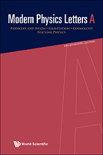
MODERN PHYSICS LETTERS A
Driving Innovation in Physics Through Scholarly DialogueMODERN PHYSICS LETTERS A, published by World Scientific Publishing Co Pte Ltd, is a distinguished journal in the field of physics that serves as a pivotal platform for researchers, professionals, and students alike. With ISSN 0217-7323 and E-ISSN 1793-6632, the journal has gained international acclaim for its contributions to Astronomy and Astrophysics as well as Nuclear and High Energy Physics. The journal is ranked in Q3 for both Astronomy and Astrophysics and Nuclear and High Energy Physics, showcasing its relevance in these areas, while also achieving a Q2 ranking in the broader category of Physics and Astronomy (miscellaneous). Spanning from 1996 to 2024, MODERN PHYSICS LETTERS A promotes open dialogue and dissemination of pioneering research findings and innovative theories. While the journal operates without an open access option, its rich content is easily accessible through various academic databases, ensuring that vital research is shared widely among the scientific community. Situated in Singapore, this journal plays an essential role in the continuous advancement of the physics discipline, fostering collaboration and knowledge sharing among global researchers.

Annual Review of Nuclear and Particle Science
Illuminating the Complexities of the Subatomic WorldAnnual Review of Nuclear and Particle Science is a prestigious journal published by Annual Reviews, focused on the fields of nuclear and high-energy physics. With an impressive impact factor that reflects its authority and influence—ranked Q1 in its category and holding a commendable Scopus rank of #2 out of 87, placing it in the 98th percentile—the journal serves as an essential resource for researchers, professionals, and advanced students alike. Covering pivotal developments and comprehensive reviews in nuclear and particle physics since its inception in 1978, this journal offers unparalleled insights into cutting-edge research and theoretical advancements. While it is not open access, the value of its scholarly content is evidenced by its rigorous peer-review process and its role in shaping contemporary discourse within the scientific community. With contributions from leading experts and a commitment to disseminating foundational and emerging theories, the Annual Review of Nuclear and Particle Science is indispensable for those seeking a deep understanding of the complexities in these dynamic fields.
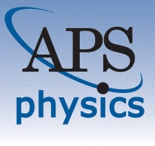
PHYSICAL REVIEW D
Catalyzing Insights in Physics and AstronomyPHYSICAL REVIEW D, published by the American Physical Society, is a premier journal dedicated to the rapid dissemination of significant research findings in the fields of Nuclear and High Energy Physics as well as Physics and Astronomy. With an impressive Impact Factor and a prestigious Q1 ranking in 2023, it stands as one of the leading journals in its domain, with a Scopus ranking of #6 out of 87 in its category, placing it in the 93rd percentile. The journal welcomes rigorous theoretical and experimental studies that advance understandings in particle physics, cosmology, and quantum field theory. Although it does not provide open access, researchers gain a significant platform to reach a global audience and contribute to the ongoing discourse within the scientific community. Published regularly since its convergence starting in 1989, it remains essential for both emerging and established scholars looking to stay at the forefront of high-energy and nuclear physics research.

PHYSICS-USPEKHI
Exploring the Frontiers of Physics and AstronomyPHYSICS-USPEKHI, published by Uspekhi Fizicheskikh Nauk, is a prominent peer-reviewed journal in the field of physics and astronomy, reaching researchers and professionals since its inception in 1993. With an ISSN of 1063-7869 and an E-ISSN of 1468-4780, this esteemed journal has been classified as Q2 in the Physics and Astronomy category based on the 2023 quartiles, ranking 74 out of 243 journals in its Scopus classification, placing it in the 69th percentile. Although currently not an open access journal, it provides invaluable insights and advancements in the field, fostering an environment for scholarly exchange and collaborative research. Based in Moscow, Russia, PHYSICS-USPEKHI continues to shape the landscape of theoretical and experimental physics, inviting submissions that contribute to its rich legacy of high-impact scientific discourse.
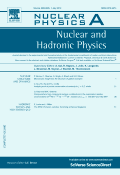
NUCLEAR PHYSICS A
Exploring the Depths of High Energy PhysicsNUCLEAR PHYSICS A, published by Elsevier, is a leading international journal dedicated to the fields of Nuclear and High Energy Physics. With an ISSN of 0375-9474 and E-ISSN 1873-1554, the journal has been pivotal in advancing research since its inception in 1967 and is set to continue influencing the discipline through 2025. It holds a commendable Q2 classification in the 2023 category of Nuclear and High Energy Physics, ranking 32nd out of 87 journals in its field according to Scopus, placing it in the 63rd percentile. NUCLEAR PHYSICS A provides valuable insights and disseminates cutting-edge research, aiding researchers, professionals, and students in their academic and practical pursuits. Though it does not currently offer open access, the journal remains a vital resource for those engaged in the exploration of nuclear phenomena and theoretical advancements in high-energy physics.

European Physical Journal Plus
Exploring the Frontiers of Physics and BeyondThe European Physical Journal Plus, published by Springer Heidelberg, is a reputable open-access journal that serves as a vital platform for innovative research across various disciplines, including physics, astronomy, and chemical engineering. With an impressive impact factor reflected by its Q2 ranking in both Fluid Flow and Transfer Processes and Physics and Astronomy (Miscellaneous) categories, this journal plays a crucial role in disseminating high-quality research findings. Since its inception in 2011, it has fostered interdisciplinary collaboration and encourages the exploration of fundamental principles and applications. The journal also boasts a respectable Scopus rank, indicating its solid influence and reach within the scientific community. Researchers, professionals, and students alike will find the journal to be an essential resource for staying abreast of advancements and trends in these dynamic fields, while its open-access model ensures that valuable insights are accessible to a broader audience.

INTERNATIONAL JOURNAL OF MODERN PHYSICS A
Fostering collaboration in the realms of astrophysics and high energy physics.INTERNATIONAL JOURNAL OF MODERN PHYSICS A, published by WORLD SCIENTIFIC PUBL CO PTE LTD, stands as a pivotal platform in advancing the frontiers of research within the fields of Astronomy and Astrophysics, Atomic and Molecular Physics, and Nuclear and High Energy Physics. Established in 1989, this journal has systematically contributed to the scientific community, with a demonstrated impact as indicated by its Q2 category rankings across these critical disciplines in 2023. Researchers and professionals are encouraged to engage with its rigorous peer-reviewed content, fostering a deeper understanding of modern physics theories and experimental breakthroughs. Although the journal operates under a conventional access model, it remains a vital resource for those seeking to disseminate their findings and stay abreast of cutting-edge developments. With an emphasis on quality and breadth of research, the journal continues to attract submissions from leading physicists and scholars, enhancing its reputation as a key academic resource.
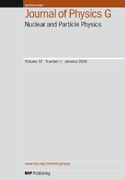
JOURNAL OF PHYSICS G-NUCLEAR AND PARTICLE PHYSICS
Transforming Insights into the Nature of MatterJOURNAL OF PHYSICS G-NUCLEAR AND PARTICLE PHYSICS, published by IOP Publishing Ltd, stands as a premier journal in the realm of Nuclear and High Energy Physics. With an established presence since 1989 and currently converging toward 2024, this influential journal emphasizes groundbreaking research and discoveries in particle physics, fostering the dissemination of knowledge among a global audience of researchers, professionals, and students. Recognized for its high-quality publications, it holds a Q1 ranking in its category for 2023, placing it at an impressive 87th percentile among 87 journals in its field as per Scopus Rankings. The journal's impact is reflected in its esteemed reputation, making it an essential resource for advancing the frontiers of physics. Although it currently does not operate under an open access model, the journal ensures that subscribers receive comprehensive insights into the latest developments and theoretical advances that shape our understanding of the universe.
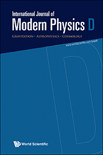
INTERNATIONAL JOURNAL OF MODERN PHYSICS D
Advancing the Frontiers of Physics and AstronomyWelcome to the INTERNATIONAL JOURNAL OF MODERN PHYSICS D, a premier publication dedicated to the advancement of knowledge in the fields of Astronomy and Astrophysics, Mathematical Physics, and Space and Planetary Science. Published by WORLD SCIENTIFIC PUBL CO PTE LTD in Singapore, the journal boasts an impressive impact, being ranked Q2 in Astronomy and Astrophysics and Mathematical Physics, and Q3 in Space and Planetary Science. With a converged publishing timeline from 1996 to 2024, this journal provides a vital platform for researchers and professionals to disseminate their findings, engage with cutting-edge research, and explore emerging ideas in modern physics. Although it operates under a traditional access model, the rigorous peer-reviewed process ensures that only the highest quality research contributes to the collective understanding of our universe. Join us in advancing the frontiers of physics and astronomy!